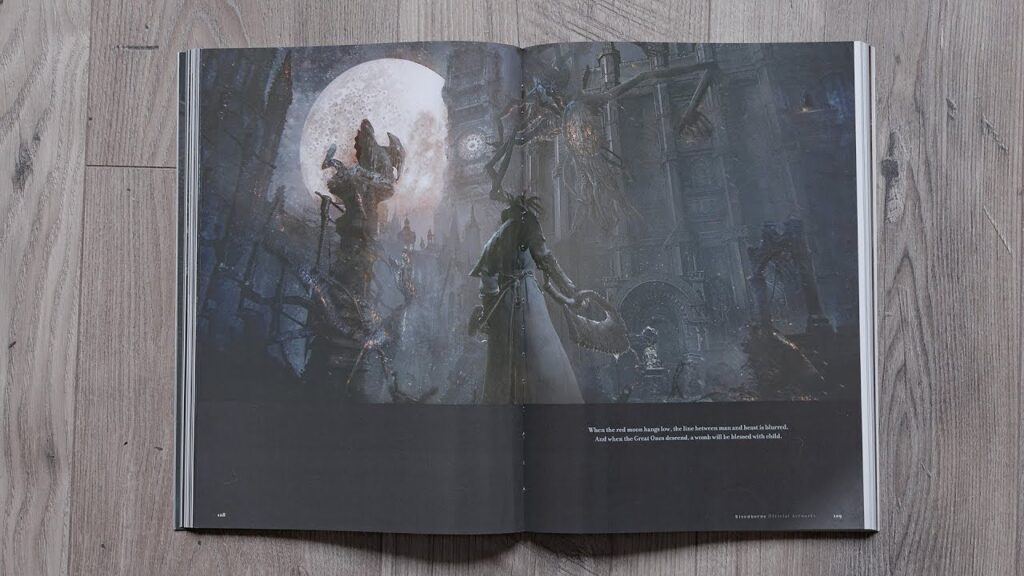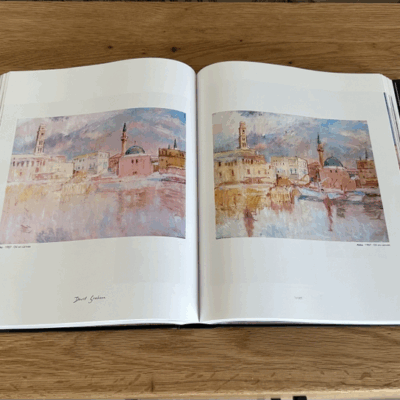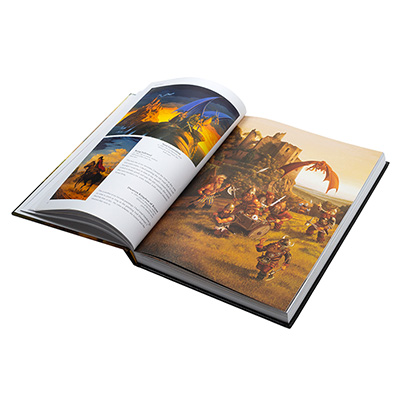Glossy vs. Matte: Choosing the Best Paper for Your art book
Understanding the Process Behind High-grade Art Book Printing for Art Fanatics
When it comes to high-quality art book printing, recognizing the ins and outs of the process can boost your gratitude for the final product. You could not recognize how important paper choice and ink choices are to the vibrancy of art work. Each component plays a considerable duty in accomplishing the preferred effect. As you discover the numerous parts of art book printing, you'll reveal understandings that can change your perspective on art preservation and presentation.
The Importance of Paper Option in Art Book Printing
When it comes to art book printing, the option of paper can make or break the end product. You want your art work to beam, and the ideal paper enhances color vibrancy and information. Consider aspects like weight, texture, and surface; these aspects substantially impact just how readers regard your job.
For example, a heavier stock conveys high quality and longevity, while a distinctive finish can add depth to photos. Smooth paper is superb for detailed recreations, allowing great lines and refined tones to appear crisp.
Don't forget the paper's brightness; a brighter sheet can help colors pop, making your art a lot more eye-catching. You'll likewise wish to think of how the paper communicates with inks and whether it can deal with the printing procedure without buckling or bleed-through. Eventually, choosing the appropriate paper establishes the phase for your art, ensuring it records the audience's attention just as you visualized.
Choosing the Right Inks for Lively Reproductions
Selecting the right inks is just as important as selecting high quality paper to achieve lively recreations in your art book. When you're publishing artwork, you desire colors that pop and precisely stand for the initial piece. Choose inks with a high pigment concentration; these have a tendency to produce richer and a lot more saturated colors.
You could take into consideration using historical inks, which stand up to fading with time, ensuring your art book continues to be as striking as the day it was printed. If you're collaborating with photographs or electronically developed art, pigment-based inks can give a broader shade range, boosting information and depth.
Don't ignore the surface! Matte and shiny inks can dramatically change the appearance of your artwork, so assume concerning the appearance you're aiming to accomplish - art book. Ultimately, the ideal ink option complements your paper choice, creating a spectacular aesthetic experience for your visitors
The Role of Shade Management in Print Quality
Shade management plays an important function in attaining high print top quality for your art book. It guarantees that the shades you see on your screen convert precisely to the published page. Without effective color management, your vibrant artworks may show up boring or distorted, undermining your creative vision.
Next, utilize color accounts customized for your printer and paper type. These accounts guide the printer in replicating colors accurately, decreasing disparities in between digital and published versions.
When you prepare your data, think about utilizing a color room like Adobe RGB or CMYK, relying on your printer's requirements. Constantly proof your job, also; an examination print can reveal any prospective shade problems before the final run. By focusing on shade monitoring, you secure the stability of your art, ensuring your audience experiences it as you intended.

Recognizing Various Binding Techniques
Achieving the ideal try to find your art book exceeds color monitoring; binding methods also play a considerable role in its overall discussion and longevity. You have a number of options to review, each with its own unique characteristics.
If you're going for a professional feeling, instance binding uses a tough choice with a hard cover, excellent for showcasing your art work. On the other hand, best binding supplies a flexible spine while maintaining prices down, making it a popular option for softcover books.
Spiral binding enables your art book to lay flat, which is great for showing images without obstruction. On the other hand, saddle stitching is excellent for smaller sized booklets, providing a tidy surface without the bulk.
Eventually, the binding technique you pick ought to reflect your creative vision and just how you want readers to engage with your job. Make certain to weigh these choices carefully to attain the very best result for your task.
The Effect of Publish Size and Format on Discussion
While the choice of print dimension and layout might seem additional to web content, they substantially affect just how your art work is regarded. The measurements of your prints can either improve or reduce the influence of check these guys out your pieces. Larger prints can attract audiences in, allowing them to value intricate information, while smaller sized styles may call for even more intimate involvement.

Conservation Methods for Durable Art Books
To ensure your art books stand the examination of time, it's vital to apply efficient conservation techniques. Start by storing them in an awesome, completely dry environment, away from direct sunlight and humidity. This protects against fading and warping, pop over to this web-site keeping your pages intact. Usage acid-free storage space boxes or protective sleeves to protect them from dirt and physical damage.
When handling your books, always clean your hands or wear cotton handwear covers to avoid oils and dirt moving onto the pages. Prevent bending or creasing the spinal columns; rather, use book sustains when presenting them.
For included protection, take into consideration buying archival-quality products for any type of repairs or improvements. Consistently check your collection for indicators of wear or damage, dealing with concerns without delay. By complying with these simple approaches, you can ensure your art publications continue to be vivid and available for several years to come, maintaining their elegance and worth for future generations.
Working together With Printers for Ideal Outcomes
When you're all set to print your art book, selecting the ideal printer is important to accomplishing your vision. Clear communication concerning your expectations and requirements will aid guarantee that both you and the printer are on the very same page. Allow's explore how to make this collaboration as smooth and reliable as feasible.
Selecting the Right Printer

Reliable Interaction Methods
Effective interaction is essential for transforming your art book vision right into reality, particularly when collaborating with printers. art book. Start by clearly describing your task's objectives, consisting of design elements, preferred materials, and any kind of specific printing methods. Do not be reluctant to share your motivations and referrals; this helps the printer understand your aesthetic
Establish up regular check-ins to discuss progress and deal with any kind of concerns. Use visuals, like mock-ups or samples, to share your ideas better. Be open to feedback, as printers typically have useful insights that can enhance your task. Preserve a positive relationship by being respectful and pleased of their know-how. This cooperation will assure that your art book satisfies your assumptions and radiates in its last form.
Regularly Asked Concerns
What Prevail Mistakes to Prevent in Art Book Printing?
When publishing your art book, stay clear of usual errors like inadequate resolution pictures, inaccurate shade accounts, and overlooking page design. Do not forget to proofread and verify information to confirm your last product meets your expectations.
How Does Digital Printing Differ From Traditional Printing Methods?
Digital printing uses digital files to produce prints directly, permitting for quicker turn-around and customization. On the other hand, typical techniques advice entail physical plates, which can be lengthy and much less flexible for tiny runs or distinct layouts.
What Is the Common Turn-around Time for Art Book Printing?
The typical turn-around time for art book printing differs, but you can anticipate it to take anywhere from a couple of weeks to a number of months. Variables like complexity, quantity, and printing approach all influence this timeline.
Can I Print a Minimal Edition Art Book Financially?
You can publish a limited edition art book financially by picking affordable products, optimizing print runs, and using electronic printing alternatives. Careful planning and budgeting will certainly aid you achieve top quality without overspending.
What Are the Ecological Factors To Consider in Art Book Printing?
When considering art book printing, you should think of eco-friendly materials, sustainable inks, and energy-efficient processes (art book). Selecting neighborhood printers can additionally reduce your carbon footprint, making your project both lovely and eco liable